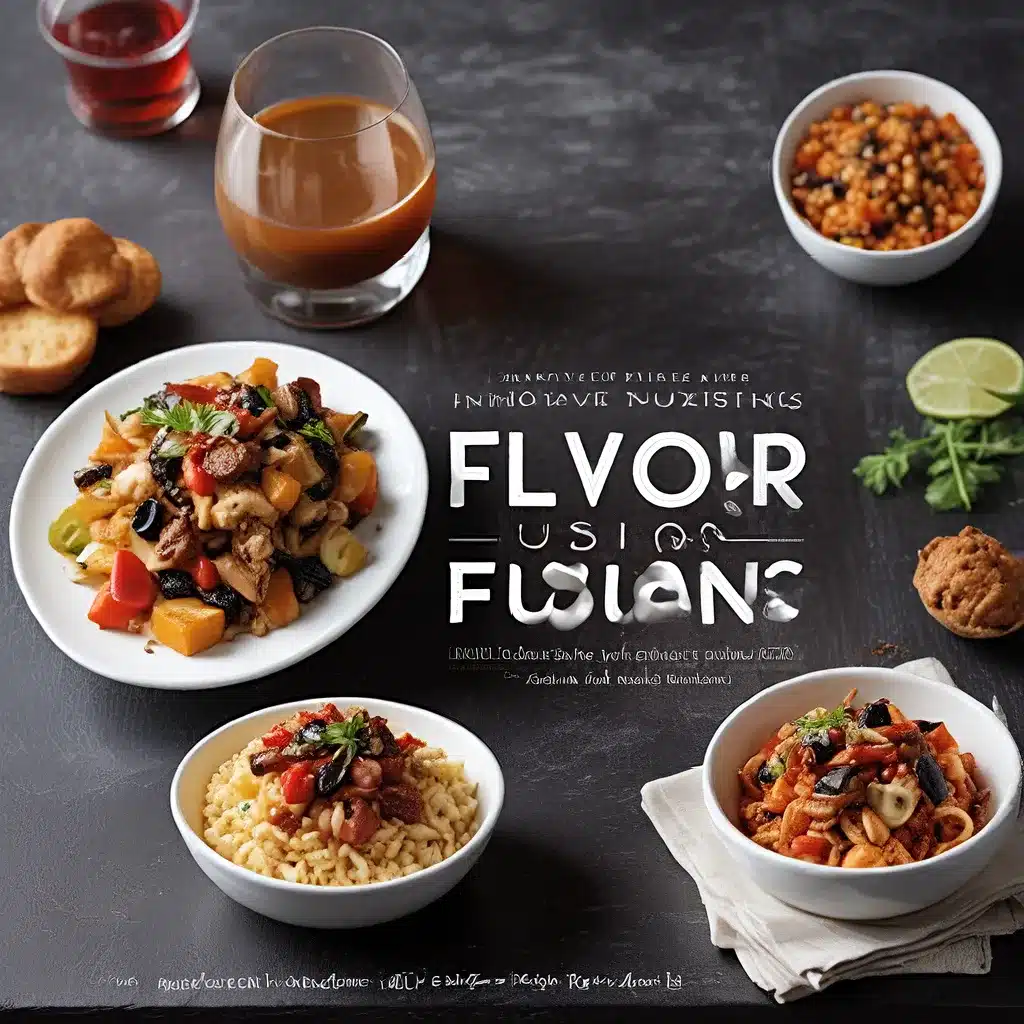
As an avid food enthusiast, I’ve always been fascinated by the art of culinary innovation. The way chefs and food scientists push the boundaries of what we consider “delicious” never ceases to amaze me. And in recent years, I’ve witnessed a surging trend that has truly captured my imagination: the rise of flavor fusions.
These ingenious combinations of seemingly disparate ingredients are redefining our taste expectations and expanding the horizons of the culinary world. From sweet and savory to sour and spicy, the possibilities for sensory exploration are endless. Today, I’m thrilled to dive into this captivating subject and uncover the stories behind some of the most innovative flavor pairings that are taking the food scene by storm.
The Science of Synergy
At the heart of flavor fusion lies a deep understanding of the science of taste. It’s not just about throwing random ingredients together and hoping for the best. Successful flavor pairings are the result of meticulous research, experimentation, and an innate grasp of how different taste profiles interact.
According to recent studies, the key to creating remarkable flavor combinations lies in identifying complementary and contrasting taste sensations. By balancing elements like sweetness, sourness, saltiness, bitterness, and umami, chefs and food scientists can achieve a harmonious and intriguing interplay of flavors.
But the science of flavor goes beyond just the fundamental taste profiles. It also involves an intricate understanding of aroma compounds, which play a crucial role in shaping our perception of taste. By carefully selecting ingredients with compatible aromatic notes, innovators can craft flavor fusions that captivate our senses and transport us to unexpected culinary realms.
Pushing the Boundaries of Creativity
As I delve deeper into the world of flavor fusions, I’m consistently amazed by the level of creativity and innovation that’s driving this culinary revolution. It’s not just about reinventing classic dishes; it’s about redefining the very essence of what we consider “delicious.”
Take, for instance, the recent trend of sweet-and-savory pairings. Who would have thought that the rich, umami-packed flavors of a fried chicken sandwich could be so perfectly complemented by a drizzle of honey or a sprinkle of powdered sugar? Yet, this unexpected combination has become a sensation, with chefs and food brands alike experimenting with this delightful fusion of contrasts.
Similarly, the world of molecular gastronomy has ushered in a new era of flavor exploration. By employing techniques like spherification, freeze-drying, and liquid nitrogen, chefs are able to create entirely novel textures and sensations that challenge our preconceptions about the boundaries of taste.
I recently had the opportunity to indulge in a dish that perfectly encapsulates this spirit of culinary experimentation. It was a deconstructed take on a classic apple pie, where the familiar flavors of tart apples, buttery crust, and warm spices were presented in unexpected forms – a frozen sphere of apple compote, a powdered “crust” sprinkled over the plate, and a fragrant cinnamon-infused foam. The result was a mind-bending experience that left me wondering, “Is this still an apple pie?”
Embracing the Unknown
One of the most captivating aspects of the flavor fusion movement is the sense of discovery and adventure it evokes. As we step outside the boundaries of traditional flavor pairings, we enter a realm where the unexpected becomes the norm, and the unknown beckons us to explore.
Flavor experts suggest that the key to unlocking new and exciting taste experiences lies in a willingness to experiment – to approach the kitchen with a childlike sense of curiosity and a readiness to embrace the unpredictable.
And this is precisely what I love about the flavor fusion movement. It encourages us to let go of our preconceptions, to challenge our taste buds, and to embark on a culinary journey where the destination is often a surprise. Whether it’s a savory ice cream infused with black garlic and balsamic, or a cocktail that blends the bitterness of charred grapefruit with the sweetness of honey and the heat of jalapeño, these innovative pairings invite us to rethink what we consider “delicious.”
The Future of Flavor
As I reflect on the captivating world of flavor fusions, I can’t help but wonder what the future holds. Will the boundaries of taste continue to expand, or will we eventually reach a point of saturation where the shock value of these innovative pairings starts to wear off?
In my opinion, the future of flavor is only just beginning. With the rapid advancements in food science, the growing influence of diverse culinary traditions, and the insatiable curiosity of chefs and food enthusiasts, I believe we are on the cusp of an even more extraordinary era of flavor exploration.
Perhaps we’ll see the rise of synesthetic dining experiences, where flavors are intentionally paired with complementary textures, sounds, and visuals to create a truly immersive sensory experience. Or maybe we’ll witness the emergence of personalized flavor profiles, where algorithms and biometric data are used to tailor culinary creations to our unique taste preferences.
The possibilities are truly endless, and the excitement is palpable. As I continue my journey through the ever-evolving world of flavor fusions, I can’t wait to see what new and wondrous taste sensations await. After all, the future of food is limited only by our imagination – and in the hands of the culinary innovators, the possibilities are truly limitless.

